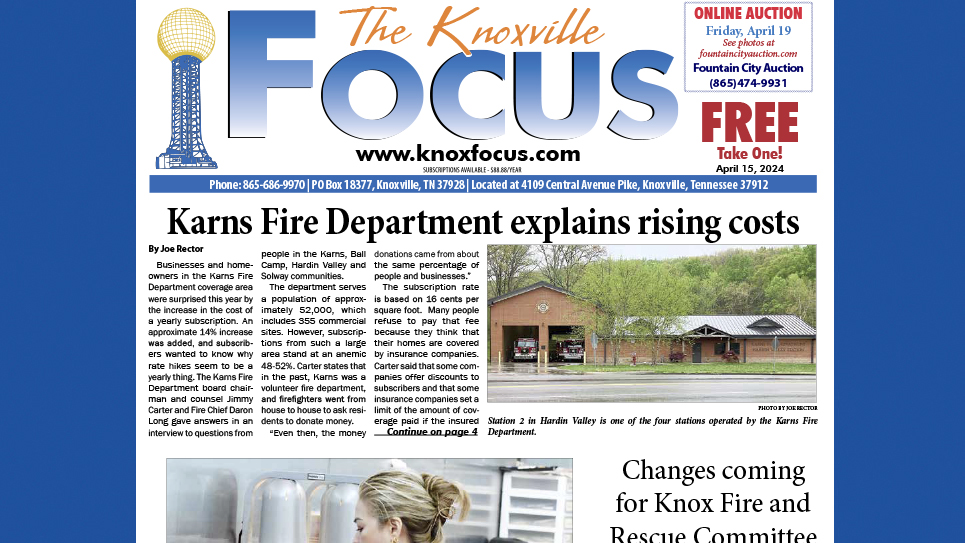One of the biggest concerns for parents of children with special needs is the issue of inclusion in the least restrictive environment. As taxpayers, we should all be concerned about the costs involved in sending students across town to segregated programs instead of using the money to more appropriately support students in their neighborhood schools and general education classrooms .
Knox County Board of Education Policy IDDF states, “The Board shall provide access to a free appropriate public education to all children with disabilities ages 3-21, inclusive, residing within the jurisdiction of the school system. The plan for implementation of appropriate instruction and special education services shall be in accordance with the current Rules, Regulations, and Minimum Standards of the State Board of Education, and state and federal law.
The Board shall develop and periodically update a local plan for providing special education services for students with disabilities. Specifically, the Board assures that:
1. All students with disabilities living within the school system have available to them a free, appropriate public education with special education and related services to meet their individual needs provided in the least restrictive environment; and
2. Provision of educational services will comply with procedural safeguards required by state and federal law.”
Kim Kredich, introduced in last week’s Focus article, provided both the Focus and the Board of Education with detailed information suggesting that KCS could redirect funds from unnecessarily transporting students away from their zoned schools to better instructing students in more appropriate and effective inclusive educational placements.
She references the work done by Dr. Michael Remus, who served over a decade ago as the Director of Special Education in Williamson County, TN. Today, Williamson County still maintains one of the highest rates of inclusion in Tennessee (a full 15% over the state target that Knox County failed to reach for students with disabilities receiving 80% or more of their instruction in the general education classroom).
Over a period of three years, Remus moved about 400 special-education students back to their neighborhood schools. He got rid of most self-contained classrooms where many special-education students spent all or most of their day. He also established learning centers in each school, rooms where not only special education students, but any student, could come to get help or accelerated learning.
It removed the stigma that special education students were different, he said, and conveyed the idea that all students need individual attention at some point. And special education teachers moved into the general classrooms along with the special education students. There, they collaborated with the general education teachers to help any student with learning problems.
Remus also established a summer academy to train special education teachers in inclusion. Over time, general education teachers started coming to learn how they could more effectively work with special needs students. And the academy has broadened its scope to address how all students who struggle can be helped.
Student achievement improved in Williamson County. Those in the lowest quartile of testing in the district — which includes many of the special education students — made well more than a year’s gain in reading and math during one year of instruction. The gains were most dramatic in the early grades. (Source: 2004 article in The Oregonian, “And Inclusion for All” by Stephen Carter)
Federal law requires that each school district provides a full continuum of educational placement options to meet the needs of students with disabilities – starting with the general education classroom with a full range of supports and services as the first consideration, and moving to more restrictive settings such as a Resource Room, Special Classes, and Residential Facilities or the child’s home as necessary.
Kredich claims that KCS’s poor inclusion numbers are indicative of improper practices in determining placement for students with moderate to severe disabilities. She points to transportation costs as a potential area where resources are being mismanaged to favor unnecessary segregation instead of promoting rightful inclusion through instructional support at students’ neighborhood schools
According to the most recent KCS application for IDEA funding, 892 KCS students received Special Education Transportation. Only 17 students in all of KCS were included under Funding Option 6, receiving the second highest amount of state/IDEA funding possible per student (the highest funding is for full-time residential/hospitalized students). Under Funding Option 6, these students receive the benefit of an Ancillary Service (sign language interpreter, physical attendant, or “other” such as an Instructional Assistant) provided to the student for 20 or more hours per week (4 hours per day) in the general education setting.
Yet, for the 892 KCS receiving special education transportation, transportation costs (none through IDEA Part B funds, all through KCS General Purpose Funds) totaled $4,948,913. This equals an average cost of over $5,500 per student receiving Special Education transportation. KCS does not differentiate costs for out-of-zone transportation as opposed to in-zone, but students bussed out of their school zone would obviously cost more to transport than those bussed within their school zone.
The bottom line is that school systems that have taken the leap to compliance with IDEA Law (to fulfill Least Restrictive Environment stipulations) have seen huge drops in transportation costs and better academic outcomes as resources are put towards inclusive instruction rather than segregation through transportation away from zoned schools.
Kredich says, “Interestingly, most parents do not even know that their in-zone children with special needs have a right to ride on the regular school bus with supports as needed,” and adds, “With our dismal record as the only county to reach none of the five state inclusion targets, perhaps we can use our ‘Needs Assistance’ support from the Tennessee Department of Education to pursue cost analyses of segregated vs. inclusive / outcomes-focused placements for students with disabilities.”






